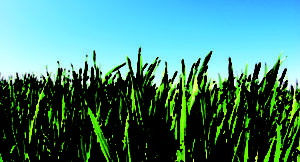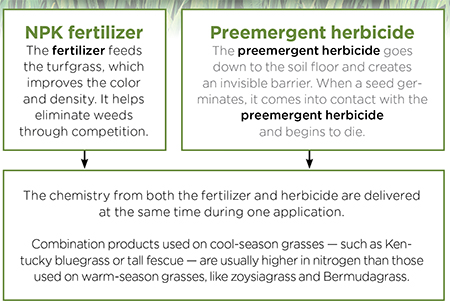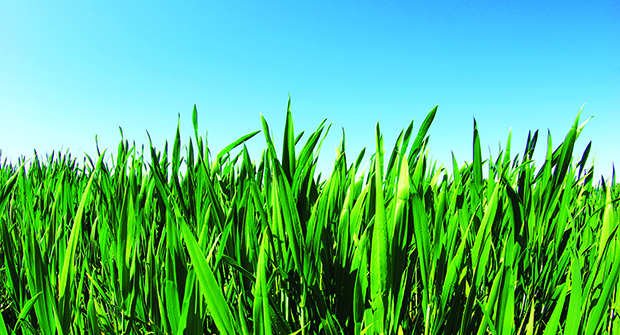
Products that combine fertilizers with another lawn care chemical can reduce the number of applications if the schedules for each substance line up.
“Being able to apply a fertilizer and something else — like a pesticide or herbicide — in one pass is the No. 1 reason why lawn care operators (LCOs) would use it,” says Jim Jensen, formulator business segment manager at Nufarm Americas. “It gives them the flexibility to save some time, especially if they have a one-week window to apply a pesticide, for example. They’re able to apply both at the same time.”
The most common combinations include pairing granular fertilizers with either herbicides (pre- or postemergent) or insecticides. There are also instances when the fertilizers are combined with fungicides, but fungicides are generally more efficient when sprayed, Jensen says.
How they work:

Traditional nitrogen, phosphorus and potassium (NPK) fertilizers are impregnated with another substance, such as an herbicide or insecticide. This chemical combination allows operators to meet two needs at once: applying fertilizer and another chemical at the same time.
Fertilizer plus herbicide products are the most common combination for LCOs, and they provide food for turfgrass while also controlling weeds, says Tony Goldsby, Ph.D., research agronomist for The Andersons Plant Nutrient Group.
Product use do’s:
LCOs need to consult the product label to determine the proper application rate for their geography, since the preemergent herbicide’s effectiveness can be affected by high amounts of rainfall, Goldsby says. “Then you can select the proper fertilizer plus preemergent combination product that will suit the needs of your area,” he adds.
In addition to rainfall, LCOs also should monitor soil temperatures and apply the preemergent barrier before the weed germinates; for example, crabgrass starts to germinate at 55 degrees, Jensen says.
To ensure product accuracy, Jensen says operators should overlap the product area during application. It’s also important to sweep or blow off any particles left on hard surfaces into the lawn area to prevent runoff.
Product use don’ts:
It’s possible for lawn care professionals to use multiple combination products, but they shouldn’t assume a product will be fine because it’s been used by itself in an application in the past. They need to review all of the labels before adding the combo to their program.
“You may have a combination product that is fine when applied as a stand-alone application, but you may need to stay clear of other combination products,” Goldsby says. Even products that can be used in conjunction with another combination product may need to have application times spaced out — such as a week window — to prevent possible turf injury, he adds.


